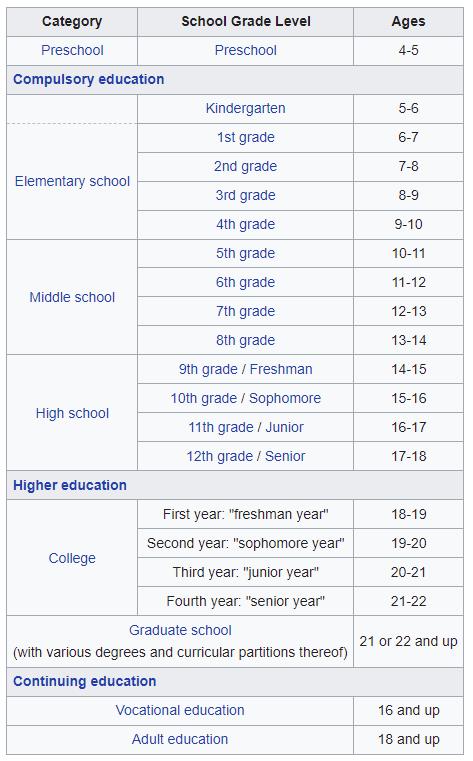

Parent Site: http://paragon.myvnc.com Paragon Publications UK |

USA Educational Framework






Is The Teaching Profession so Black & White?
CHAPTER 7
Qualifications
[5-5]
Students completing high school may choose to attend a college or university, which offer undergraduate degrees such as Associate's degrees or Bachelor's degrees (baccalaureate).
Community college or junior college typically offer two-year associate's degrees, although some community colleges offer a limited number of bachelor's degrees. Some community college students choose to transfer to a four-year institution to pursue a Bachelor's degree. Community colleges are generally publicly funded (usually by local cities or counties)and offer career certifications and part-time programs.
Four-year institutions may be public or private colleges or universities.
Some counties and cities have established and fund four-year institutions; examples include the City University of New York, City Colleges of Chicago, and San Francisco City College.
Community college or junior college typically offer two-year associate's degrees, although some community colleges offer a limited number of bachelor's degrees. Some community college students choose to transfer to a four-year institution to pursue a Bachelor's degree. Community colleges are generally publicly funded (usually by local cities or counties)and offer career certifications and part-time programs.
Four-year institutions may be public or private colleges or universities.
Some counties and cities have established and fund four-year institutions; examples include the City University of New York, City Colleges of Chicago, and San Francisco City College.
Copyright © 2024 by Nigel G Wilcox
All Rights reserved
E-Mail: ngwilcox100@gmail.com
Web Address: paragon-publication.uk
All Rights reserved
E-Mail: ngwilcox100@gmail.com
Web Address: paragon-publication.uk
Designed by GOEMO.de
Powered by S-AM3L1A-NGW
Powered by S-AM3L1A-NGW
USA-DeptEd...
Resources Intro..
QUALIFICATIONS

In K–12 education, sometimes students who receive failing grades are held back a year and repeat coursework in the hope of earning satisfactory scores on the second try.
High school graduates sometimes take one or more gap years before the first year of college, for travel, work, public service, or independent learning. Some might opt for a postgraduate year before college.
Many undergraduate college programs now commonly are five-year programs. This is especially common in technical fields, such as engineering. The five-year period often includes one or more periods of internship with an employer in the chosen field.
Of students who were freshmen in 2005 seeking bachelor's degrees at public institutions, 32% took four years, 12% took five years, 6% took six years, and 43% did not graduate within six years. The numbers for private non-profit institutions were 52% in four, 10% in five, 4% in six, and 35% failing to graduate.
Some undergraduate institutions offer an accelerated three-year bachelor's degree, or a combined five-year bachelor's and master's degrees. Many times, these accelerated degrees are offered online or as evening courses and are targeted mainly but not always for adult learners/non-traditional students.
Many graduate students do not start professional schools immediately after finishing undergraduate studies, but work for a time while saving up money or deciding on a career direction.
The National Center for Education Statistics found that in 1999–2000, 73% of people attending institutions of higher education were non-traditional students.
High school graduates sometimes take one or more gap years before the first year of college, for travel, work, public service, or independent learning. Some might opt for a postgraduate year before college.
Many undergraduate college programs now commonly are five-year programs. This is especially common in technical fields, such as engineering. The five-year period often includes one or more periods of internship with an employer in the chosen field.
Of students who were freshmen in 2005 seeking bachelor's degrees at public institutions, 32% took four years, 12% took five years, 6% took six years, and 43% did not graduate within six years. The numbers for private non-profit institutions were 52% in four, 10% in five, 4% in six, and 35% failing to graduate.
Some undergraduate institutions offer an accelerated three-year bachelor's degree, or a combined five-year bachelor's and master's degrees. Many times, these accelerated degrees are offered online or as evening courses and are targeted mainly but not always for adult learners/non-traditional students.
Many graduate students do not start professional schools immediately after finishing undergraduate studies, but work for a time while saving up money or deciding on a career direction.
The National Center for Education Statistics found that in 1999–2000, 73% of people attending institutions of higher education were non-traditional students.











